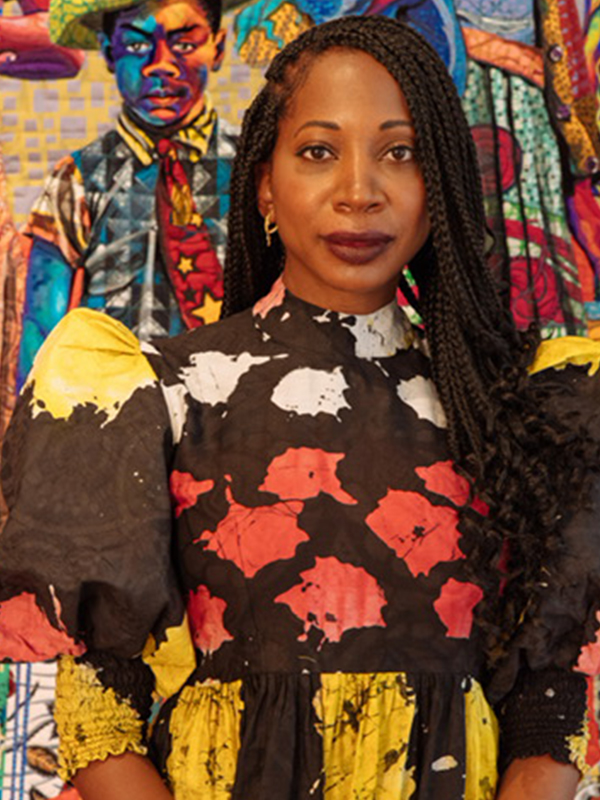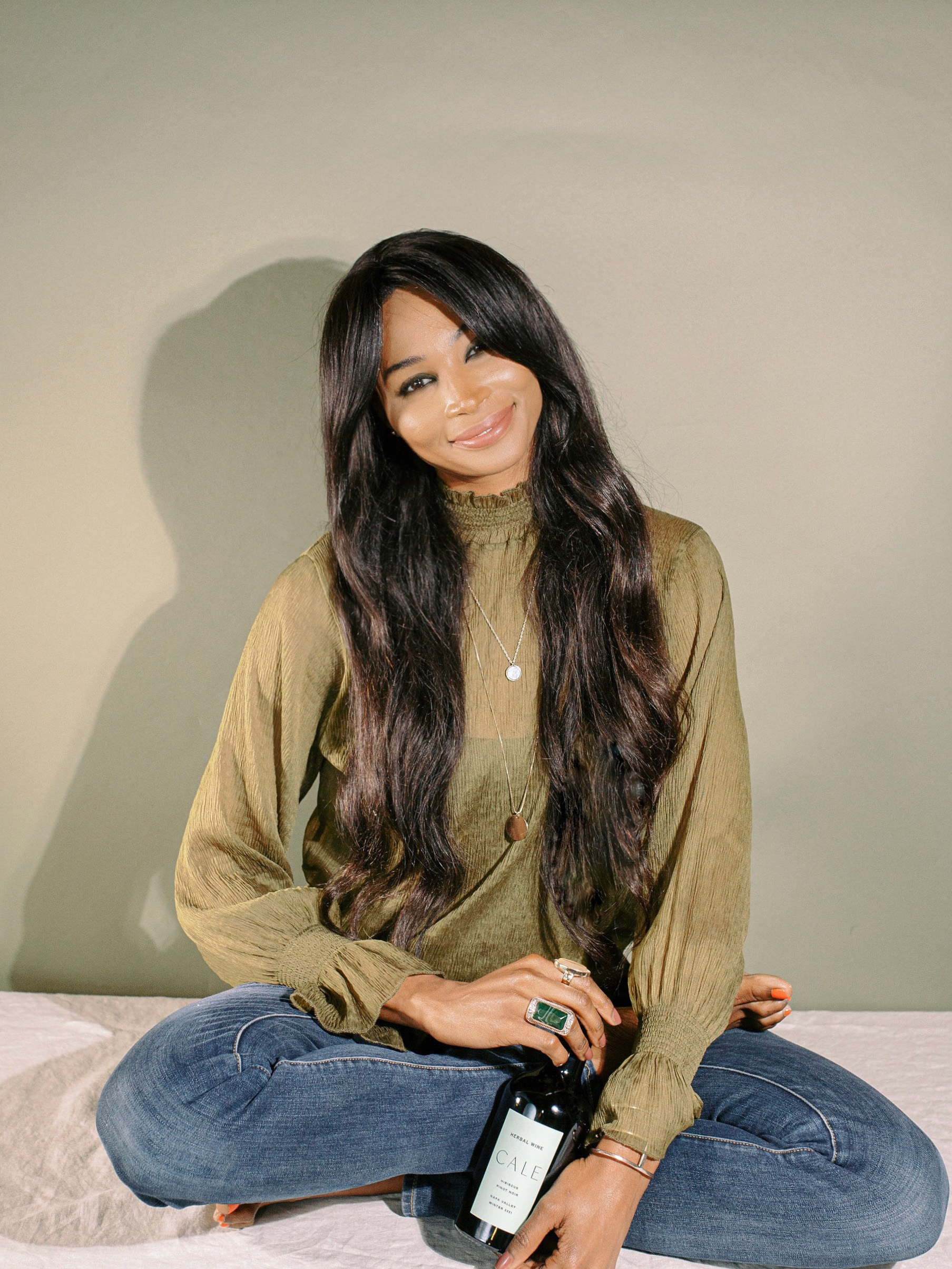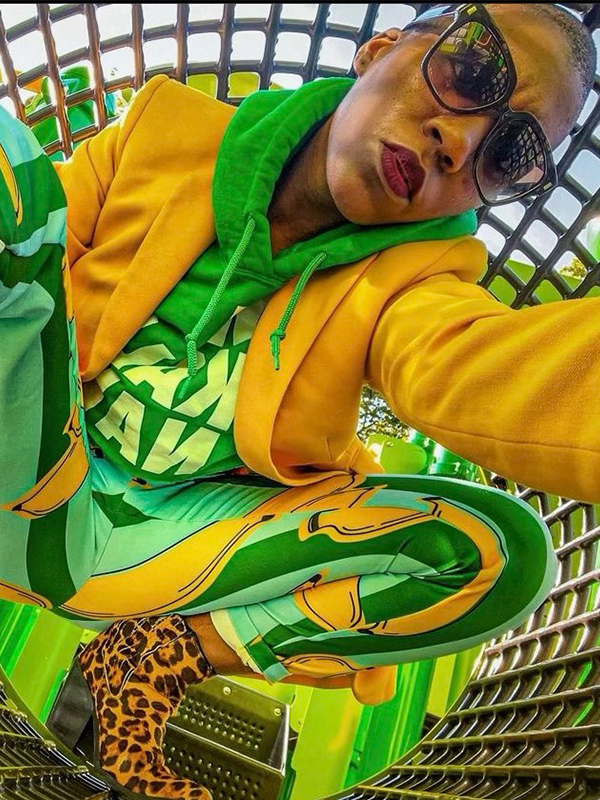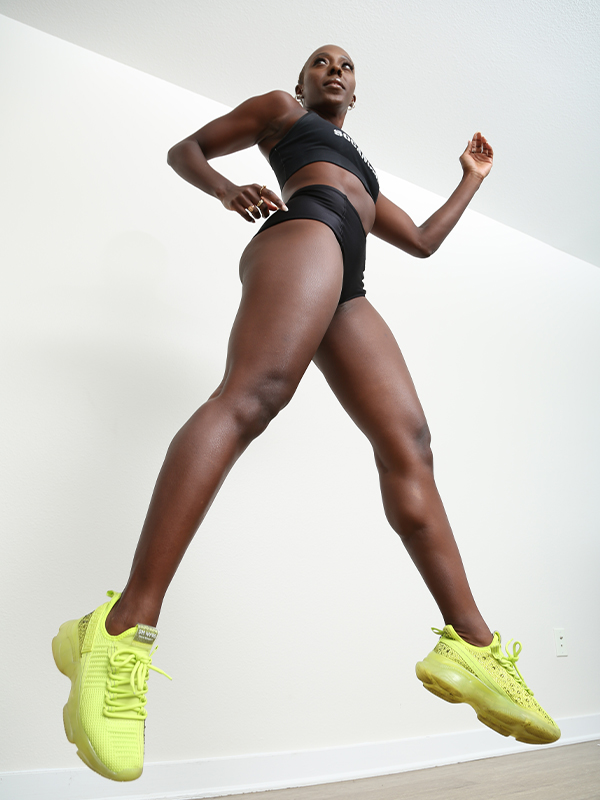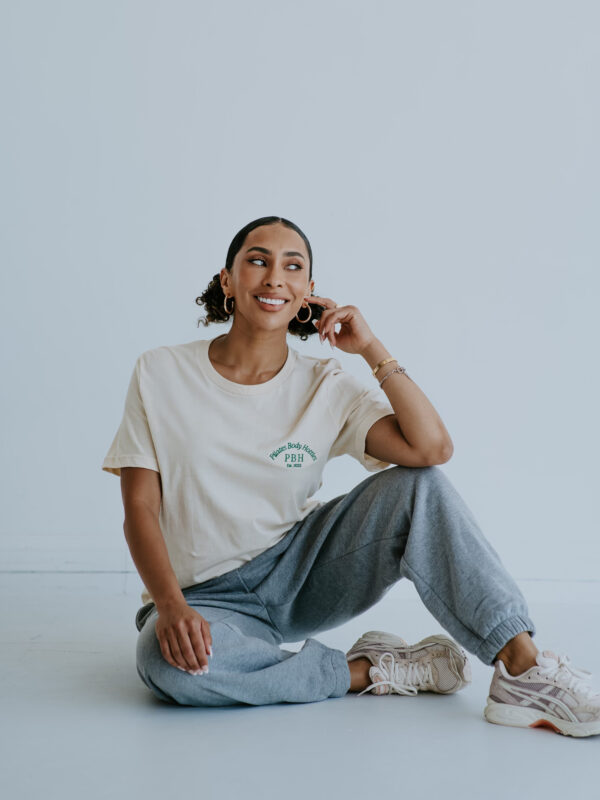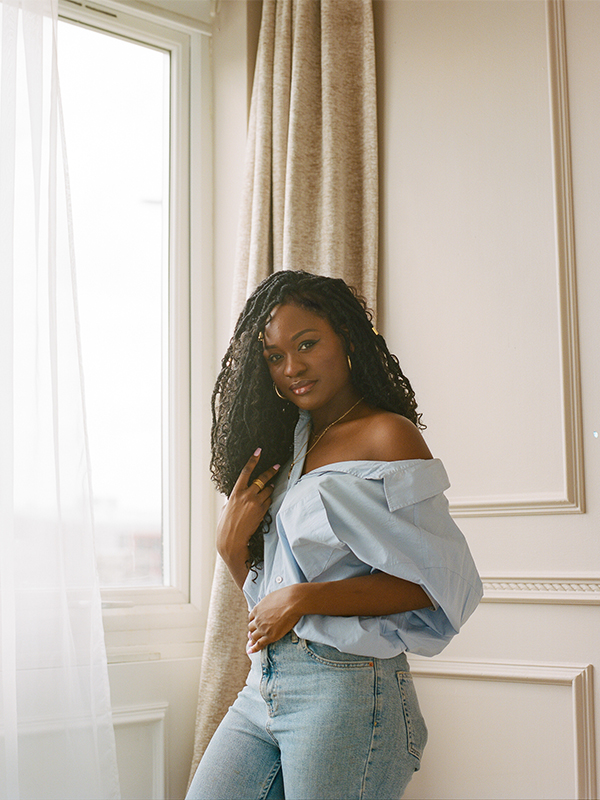Creatives of all artistic genres coalesced during the Black Arts Movement in the 1970s and 80s with a unified purpose: to resist the traditional influences and codified rules of fine arts in Western culture. The goal was to tell the stories of Black Americans’ struggle for freedom.
A groundswell of portrait artists and painters gave life to this ongoing Black artistic renaissance. But these bold celebrations of Black power and pride that graced studio canvases, or adorned the asphalt of 20 ft. tall abandoned buildings were seldom embraced in the mainstream art world.
In recent years, the inclusion of Black voices and identity in art galleries and museums has improved. Kehinde Wiley and Amy Sherald’s acclaimed portraits of the Obamas, for example, have drawn unprecedented interest from abroad as the artworks make their rounds in five major U.S. cities. The murder of George Floyd and other widespread incidences of police brutality have inspired Black artists from across the nation to mobilize their art for empowerment and social justice.
Sweet July spoke with three curators about their unique aesthetic and approach to bringing a truthful representation of beauty, promise and life to the history of African Americans and the Black diaspora.
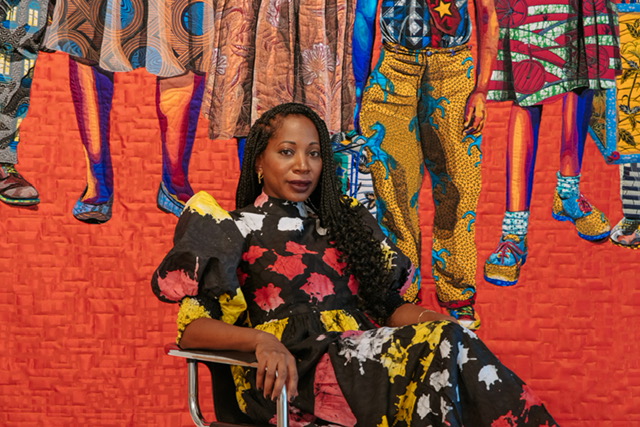
“I find that I have more mainstream success now, but without having that solid foundation of the Black community, quilters and their families, I think it would fall like a house of cards.”
You have a very meticulous technique in your use of stitching together textiles to create these beautiful pieces that can take up to 200 hours to complete. What made you decide to use fabric as your art medium?
Bisa Butler: My techniques were influenced by my professors at Howard University. The Dayglo color palette is what my professors used, which were popular in the 1960s—they called them ‘Kool-Aid colors.’ When I decided to become an art teacher, I had to take a fiber arts course. I made an overmitt and everything just clicked [at] that moment. It was the depth, texture and maybe a connection to my ancestors that gave me a way to express myself that paint never could.
How do you go about choosing photographs that you want to bring to life through your creative process of fabric portraiture?
BB: When I first started creating artwork, I was just making portraits of my friends and family. When I make artwork now, I’m just focusing on what are the stories that are important to me and what I would like to share with the world.
Historically, Black artists’ work has been largely absent in mainstream art galleries. Do you believe we are seeing a shift in this representation?
BB: When we all watched George Floyd get murdered, there was no more ignoring what was happening to Black people or trying to pretend that racism doesn’t exist. I think collectors responded to that. There are a lot more Black collectors with a lot of money, but they may not have been raised in a household with priceless artworks on the wall, so we don’t know anything about art. Some white collectors are seeking out artworks to genuinely right the wrongs of the past as much as they can, but there are others who are watching the market and looking at it as a business because Black art is hot.
Since you draw your inspiration from archival photos, do you have an idea of who your next muse will be?
BB: I’ve been interested lately in really exploring my African side. My mother is from New Orleans and my father is from Ghana. So, I want to start looking at African photographers [such as] Malick Sidibé, James Barnor and Kwame Brathwaite; their work is amazing and I want to make sure that they’re a part of the story.
“I wanted to tap into the engineering part of my brain to do something different and multidimensional to make it clearly stand out that this was my work”
How did your love for hair and your own hair journey inspire your work as a 3D artist?
Tyler Clark: When I was young, I always wanted to learn how to braid hair. I was also the kid who would sneak out of the room in the middle of the night to color. I studied math and mechanical engineering in college because, growing up, I thought pursuing a STEM career was the direction to go because of the financial stability it would offer. College was a really difficult time in my life because I was pulling all-nighters to study for tests that I would fail. I needed something to make me feel good about myself, so I started to dedicate time to painting. When I moved back home to Chicago [from Atlanta] for a job, I would paint when I came home from work. One day, a piece of art that I had attached hair to went viral on social media. That’s when I realized that this is something that can set me apart.
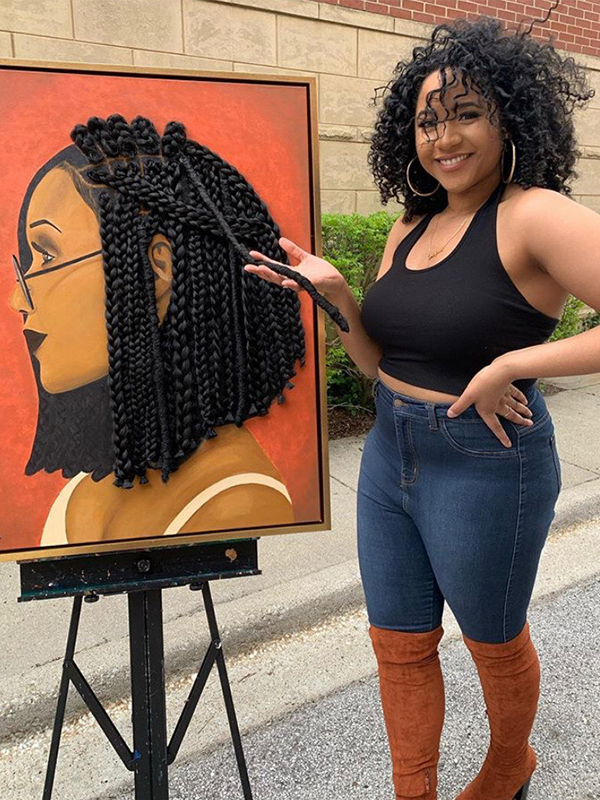
Your own hair journey is something you struggled with in your early adult years. What did you want to convey to yourself and other Black women who found it difficult to embrace their hair?
TC: I wanted to offer representation to Black women and girls because of my own natural hair journey. I wanted to encourage them to embrace their hair, no matter what they did with it. There’s so much judgment of Black women’s hair, so I wanted to bridge the gap to create something beautiful to any eye. When I was at my corporate job, I put my art into my cubicle because it was important to me to build out my authenticity.
You decided to become a full-time artist in 2020. What was it that made you take that leap of faith?
TC: I worked at United Airlines and they got hit pretty hard due to the pandemic because people weren’t traveling. I took a voluntary separation package and my thought was that I had a way to make money, unlike some colleagues of mine. So, I was leaving to pursue my dreams and give one of my colleagues who needed the job a chance to stay. I would tell anyone who may find themselves in my shoes to never neglect their creativity and don’t assume there’s only one path to success.
You made a special painting for George Floyd’s daughter. What was it that moved you to paint this portrait in honor of her father?
TC: Art is my therapy, and, at the time, I felt the most value I could add was behind a canvas. Creating this visual story and speaking about it in a way that uplifts me and people like me and always talking about how good God is. That particular piece that I created for her is called “Faith Over Fear.” She’s on top of her uncle’s shoulders, smiling with pure joy. This little girl who was the most impacted was happy again. I think that just shows the goodness of what God can do and how we can still experience joy, no matter how upsetting something is.
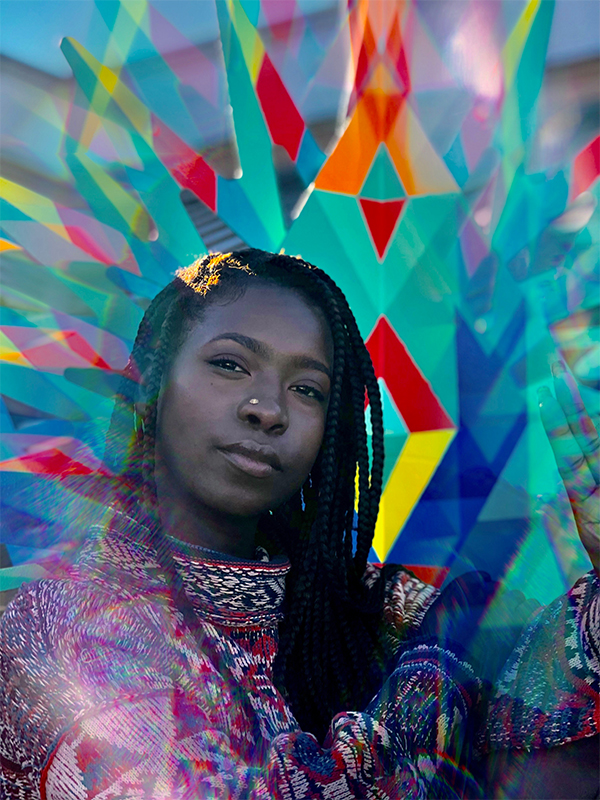
“I really like to make prominent Black and ethnic features because these were features that we were taught to hate. The story in it is these are the features that make us brilliant and preserve us”
Intersectionality of a shared world is the impetus of your artwork. What made you decide to combine your love for environmentalism, wildlife and contemporary social issues?
Georgie Nakima: I believe my background in biology and chemistry seated the foundation of my work in intersectionality by taking in the ecosystem [around me] and translating that into my work. I try to inform it to be about people, the land, air and water. It’s very important for my work to be intersectional while still championing the stories we cherish as Black people.
How would you describe your art and what’s the message behind it when you do public work, such as murals?
GN: I started as a studio artist and have been doing murals for five years. In the South, colorism is culturally embedded in our DNA as Black people. I remembered when I was younger, calling someone ‘blurple’ was an insult. We were telling them that you’re so Black, you’re purple. Now I paint Black people who are purple, blue and have all types of hues in them. I mix color theory with colorism to break those generational limitations and lies that we were told to keep us from seeing our own inner and outer beauty.
Any special projects that you’re working on for Black History Month?
GN: I [worked] with AT&T on its Black Future Makers digital campaign that [launched] on February 1, 2022. I [created] over 30 portraits of Black Future Makers, including myself.
What are some ways to find and invest in Black art and support Black artists?
GN: Buy Black art and share it. Or, if you can’t buy it, follow Black artists. Social currency is just as valid.
These interviews have been edited and condensed for clarity.
